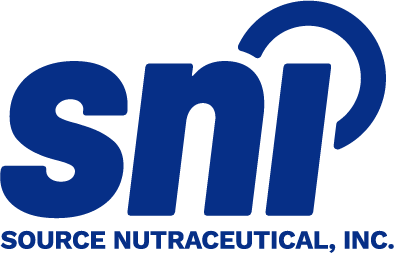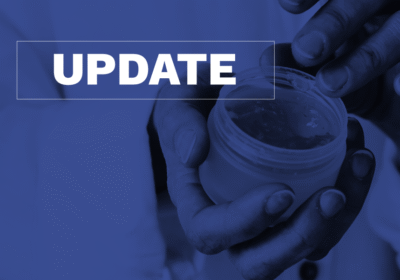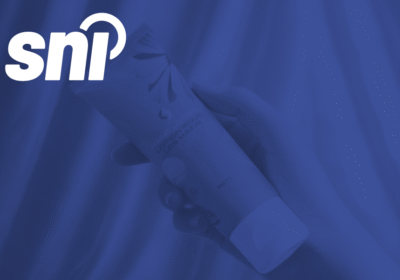Navigating the regulatory landscape of the Canadian cosmetic industry is essential for both manufacturers and consumers. Canada’s cosmetic regulations are designed to ensure product safety, transparency, and consumer confidence, but understanding these rules and the public consultation process is key for businesses aiming to succeed in the market.
What Are Canadian Cosmetic Regulations?
In Canada, cosmetics are regulated under the Food and Drugs Act and the Cosmetic Regulations. Health Canada enforces these rules, ensuring all cosmetic products are safe and accurately labeled. These regulations apply to a wide range of products intended for cleansing, improving, or altering the skin, hair, teeth, or overall appearance, including items such as moisturizers, shampoos, makeup, and deodorants.

Unlike drugs or medical devices, cosmetics do not require pre-market approval or licensing. However, manufacturers and importers are required to submit a Cosmetic Notification Form to Health Canada within ten days of a product’s first sale in Canada. This obligation also applies to any changes in the product’s formulation, function, or responsible party information.
The notification must include detailed information about the product, such as its name, form, intended use, complete ingredient list with concentrations, and the contact information of the manufacturer or importer in Canada. New labelling requirements, including the disclosure of certain fragrance allergens, are being phased in and will soon become mandatory. Compliance with these requirements is essential to ensure continued market access and avoid enforcement actions.
Why Compliance Matters for Businesses
For businesses looking to sell cosmetics in Canada, staying compliant with these regulations is crucial for consumer safety and to avoid legal and financial repercussions. Non-compliance can lead to product recalls, fines, and even the loss of market access.
Many consumers, around 80%, check ingredient lists before purchasing cosmetics, making transparency in labelling both a legal requirement and a competitive edge.
Having a robust internal compliance program can help businesses stay ahead of regulatory changes and demonstrate a commitment to product quality and safety. This helps build trust with consumers, which can significantly impact a brand’s success.
Global Compliance and Canadian Standards

Canada’s cosmetic regulations are closely aligned with international frameworks such as those in the European Union and the United States, which simplifies regulatory navigation for businesses operating across multiple markets. For example, Canada’s Cosmetic Ingredient Hotlist, Health Canada’s list of prohibited and restricted substances, is functionally similar to the EU’s banned-substances list.
Further alignment is evident in Canada’s adoption of fragrance allergen labelling requirements that mirror the EU’s legislative approach. Beginning in 2026, Canadian regulations will require individual disclosure of designated fragrance allergens above specific threshold levels, consistent with European standards.
Canadian and U.S. cosmetic frameworks also share key similarities. Neither country requires pre-market approval for most cosmetic products, and both place the responsibility on manufacturers to ensure product safety and accurate labelling. In both jurisdictions, regulatory oversight focuses on post-market monitoring, safety substantiation, and proper ingredient disclosure. Ongoing cooperation between Health Canada and the U.S. FDA supports continued alignment through initiatives such as the Regulatory Cooperation Council.
Compliance with Canadian cosmetic regulations is more than a legal necessity. It is a strategic business asset. Companies that stay aligned with both Health Canada requirements and global norms enhance product credibility, build consumer trust, and facilitate international growth.
Key Legislation in Canadian Cosmetic Regulations

For any business looking to manufacture, import, or sell cosmetics in Canada, understanding the legal framework is essential. Canada’s cosmetic regulations are built upon three primary legislative pillars that work together to ensure products are safe, accurately labelled, and truthfully marketed:
Food and Drugs Act
The Food and Drugs Act provides the foundation for all cosmetic regulation in Canada. It sets out the general principles that govern the sale of cosmetics, including the requirement that all products must be safe for use, must not be misleading, and must not contain prohibited or harmful ingredients. It also gives Health Canada the authority to take action against unsafe or non-compliant products, including product recalls or enforcement measures.
Cosmetic Regulations
Operating under the authority of the Food and Drugs Act, the Cosmetic Regulations outline the specific requirements that cosmetic products must meet to be legally sold in Canada. This includes obligations around ingredient safety, manufacturing practices, and mandatory product notification. All manufacturers and importers are required to submit a Cosmetic Notification Form to Health Canada within ten days of selling a product in Canada, and again if there are changes to the product’s formulation, name, or responsible party. These regulations also provide guidance on labelling content and banned or restricted substances.
Consumer Packaging and Labelling Act
The Consumer Packaging and Labelling Act ensures that cosmetic labels are truthful, clear, and not misleading. It focuses on the way information is presented to consumers, including proper product identity, net quantity, dealer information, and legibility. All mandatory information must be provided in both English and French, and products sold in Quebec must meet additional language requirements. This legislation ensures that consumers can make informed decisions based on clear and accurate information.
Together, these three legislative frameworks ensure that cosmetic products sold in Canada meet high standards for safety, transparency, and consumer protection. The Food and Drugs Act defines the overarching safety requirements, the Cosmetic Regulations provide detailed rules for ingredients and notification, and the Consumer Packaging and Labelling Act governs how products are presented to the public.
For manufacturers, importers, and brand owners, understanding and complying with all three laws is essential. Neglecting even one of these pillars can lead to regulatory action, delayed market access, or damaged consumer trust.
Cosmetic Notification Requirements and Compliance Responsibilities in Canada

To legally sell cosmetics in Canada, manufacturers and importers are required to submit a Cosmetic Notification Form (CNF) to Health Canada within ten days of the product’s first sale. This mandatory submission serves as a formal notice that a cosmetic product is being marketed in Canada. While submission of the CNF is a regulatory requirement, it does not confirm that the product complies with all applicable cosmetic regulations.
Compliance is expected at the time of notification, but it is not verified during the initial review process. Health Canada may review CNFs to monitor ingredient use, assess potential safety risks, and identify products that warrant further evaluation. In such cases, additional information may be requested to support the safety and regulatory compliance of the product. For most cosmetic products, however, the system will automatically generate a cosmetic number once the notification is successfully submitted.
Verifying Product Classification
Before submitting a CNF, manufacturers must confirm that the product is properly classified as a cosmetic. Products that include therapeutic claims or contain ingredients that cause physiological effects may fall under the regulatory framework for drugs or natural health products rather than cosmetics (see later sections for definitions). Incorrect classification can result in rejected notifications, reclassification, or enforcement. To ensure the correct regulatory pathway, there must be clear alignment between the product’s formulation, labelling, intended use, and marketing claims.
Required Information on the CNF

A complete CNF must include several key details. These include the product’s name and function, its form such as cream, gel, or spray, whether it is a rinse-off or leave-on product, and the area of application. The form must also include a full list of ingredients using INCI nomenclature with concentration ranges, and the name and Canadian contact information for the manufacturer, importer, or responsible party.
Screening Against the Cosmetic Ingredient Hotlist
Although the CNF does not undergo a formal pre-approval process, Health Canada actively monitors the ingredients listed in submitted notifications. Products that contain substances identified on the Cosmetic Ingredient Hotlist, whether prohibited or restricted, may be flagged for further review. It is the responsibility of the manufacturer or importer to assess their formulations against the Hotlist before submitting a CNF. Verifying compliance with ingredient restrictions helps reduce the risk of regulatory delays, additional scrutiny, or enforcement action.
Responsibility for Compliance

It is the responsibility of the manufacturer, importer, or designated responsible party to ensure that a cosmetic product meets all applicable regulatory requirements and safety standards. Health Canada places this responsibility on the company marketing the product, regardless of where the product is manufactured.
Supporting information such as safety assessments, formulation data, or claim substantiation may not be requested during the initial notification process. However, if the product contains ingredients listed on the Cosmetic Ingredient Hotlist or if concerns are identified, Health Canada may request this information. In all cases, it must be readily available upon request and properly maintained.
Importance of Record-Keeping and Quality Systems
To support ongoing compliance, it is essential to implement and maintain a comprehensive record-keeping system and robust internal quality control procedures. This should include documentation related to product formulation, raw material specifications, safety testing, ingredient sourcing, and substantiation for marketing claims.
A proactive approach to documentation allows companies to respond promptly to regulatory inquiries. It also demonstrates a clear commitment to consumer safety and reinforces brand credibility. Well-maintained records reduce the risk of non-compliance and support long-term success in the Canadian cosmetic market.
CNF Discontinuations

If a cosmetic product is no longer being sold in Canada, the responsible party must notify Health Canada by submitting a discontinuation CNF. This ensures that the cosmetic notification database remains accurate and up to date. Properly closing out discontinued products helps prevent confusion during inspections or future audits and supports ongoing regulatory transparency.
Cosmetic Labelling Requirements in Canada
Like other product categories, cosmetic products sold in Canada must comply with applicable labelling regulations before entering the market. hese requirements ensure that consumers receive accurate, clear, and complete information about the products they use. Labelling regulations apply to both the inner and outer packaging and include rules around layout, language, font size, and content.
Technical and Language Requirements

All required labelling information must be clearly legible and prominently displayed. This includes minimum font size and proper formatting to ensure readability under normal conditions of sale or use. Labels must present mandatory information in both English and French. For products sold in Quebec, additional provincial language requirements apply, which go beyond federal bilingual standards. It is essential that all product-related information is fully translated into Canadian French.
Mandatory Information on Cosmetic Labels
Cosmetic labels must include several key elements:
Ingredients: A complete list of ingredients using International Nomenclature of Cosmetic Ingredients (INCI) names. Ingredients must be listed in descending order of concentration, with those present at one percent or more appearing before those present at lower levels.
Fragrance Allergens: Any fragrance allergens identified in the Cosmetic Regulations must be listed separately from the general term “Parfum” if present above the specified thresholds. For rinse-off products, the disclosure threshold is 0.01%, and for leave-on products, it is 0.001%.
Product Identity: The common or generic name of the product, or a clear description of its function, must be displayed so that consumers can easily identify what the product is.
Contact Information: Labels must provide a way for consumers to contact the responsible party. This may include a phone number, email address, website, or postal address.
Identity and Principal Place of Business: The name and Canadian address of the manufacturer, importer, or responsible party must appear on the label. This helps ensure accountability and traceability.
Avoidable Hazards and Cautions: If the product presents avoidable hazards under normal use, appropriate warnings or safety instructions must be included. This may apply to specific product types such as aerosols, hair dyes, or products intended for sensitive areas.

Proper cosmetic labelling is more than a regulatory obligation. It helps build trust with consumers, supports product transparency, and ensures that individuals can make informed decisions about the products they choose to use. Non-compliant labelling can result in enforcement actions, product recalls, or barriers to market access.
Therapeutic vs. Cosmetic Claims
When developing cosmetic products for the Canadian market, one of the most important aspects of compliance is ensuring that product claims align with regulatory guidelines. Health Canada provides clear direction on what constitutes an acceptable cosmetic claim versus a therapeutic claim, and misunderstanding the distinction can lead to serious regulatory consequences. Manufacturers must ensure that their cosmetic claims align with the established criteria for “acceptable claims”, defined under the Guidelines for Cosmetic Advertising and Labelling Claims.
In general, cosmetic claims fall into two categories: cosmetic-type claims and therapeutic claims.
Cosmetic-type claims are acceptable under Canadian regulations and relate to changes in appearance or product performance without implying any medical or physiological effect. These claims focus on how a product looks, feels, or performs. For example, a mascara that “thickens and lifts lashes” or a moisturizer that “improves skin radiance” would fall into this category. These types of claims are permitted because they reflect superficial benefits and do not suggest that the product changes or impacts body functions
Therapeutic claims, on the other hand, suggest a biological or physiological effect. These include claims such as “stimulates lash growth,” “heals dry skin,” or “treats acne.” Statements like these imply that the product interacts with the body in a way that goes beyond cosmetic enhancement. Products making therapeutic claims are no longer considered cosmetics and must be classified and licensed as either drugs or natural health products. This change in classification introduces additional regulatory requirements, including licensing, clinical evidence, and post-market monitoring.
Manufacturers must ensure that only permissible claims are included on product labelling and marketing. Claims that suggest physiological changes can reclassify the product, ultimately affecting the regulatory requirements it must meet to comply with Canadian regulations.
Beyond using appropriate claims, manufacturers must also substantiate any claims made on product labels and marketing materials. For example, if a cosmetic product claims to “whiten teeth,” supporting studies must demonstrate its effectiveness. In other words, cosmetic claims must be truthful and not misleading, ensuring that products deliver on their promises.
The Public Consultation Process

Canada’s regulatory authorities regularly conduct public consultations as part of the process to update and refine cosmetic regulations. These consultations involve gathering input from a broad range of stakeholders, including consumers, industry professionals, advocacy groups, and subject matter experts. Feedback is typically collected through public notices, online surveys, webinars, workshops, and written submissions. This inclusive approach ensures that regulatory decisions are transparent, informed, and responsive to both public health priorities and industry realities.
Public input plays a central role in shaping updates to cosmetic regulations, particularly in areas such as ingredient restrictions, labelling requirements, and disclosure of fragrance allergens. For instance, stakeholder feedback may influence whether certain ingredients are added to or removed from Canada’s Cosmetic Ingredient Hotlist or prompt new labelling rules that help consumers make more informed choices.

The consultation process often begins with a formal notice outlining proposed changes, followed by a public comment period. Stakeholders are encouraged to review the proposed updates and provide evidence-based feedback. Once the consultation period closes, the regulatory body reviews submissions, finalizes the amendments, and publishes the results.
This collaborative process strengthens the scientific and practical basis of cosmetic regulations and fosters trust between regulators, the industry, and the public. It also allows businesses to stay ahead of regulatory changes and ensures that Canada’s cosmetic standards continue to protect consumer health while supporting innovation.
Key Changes in Cosmetic Regulations
Canada has introduced several important updates to its cosmetic regulatory framework, all aimed at improving transparency, consumer safety, and industry accountability. These changes impact ingredient disclosure, labelling practices, product testing, and notification procedures. Businesses operating in the Canadian cosmetic space should be aware of the following key updates:
Ingredient Transparency
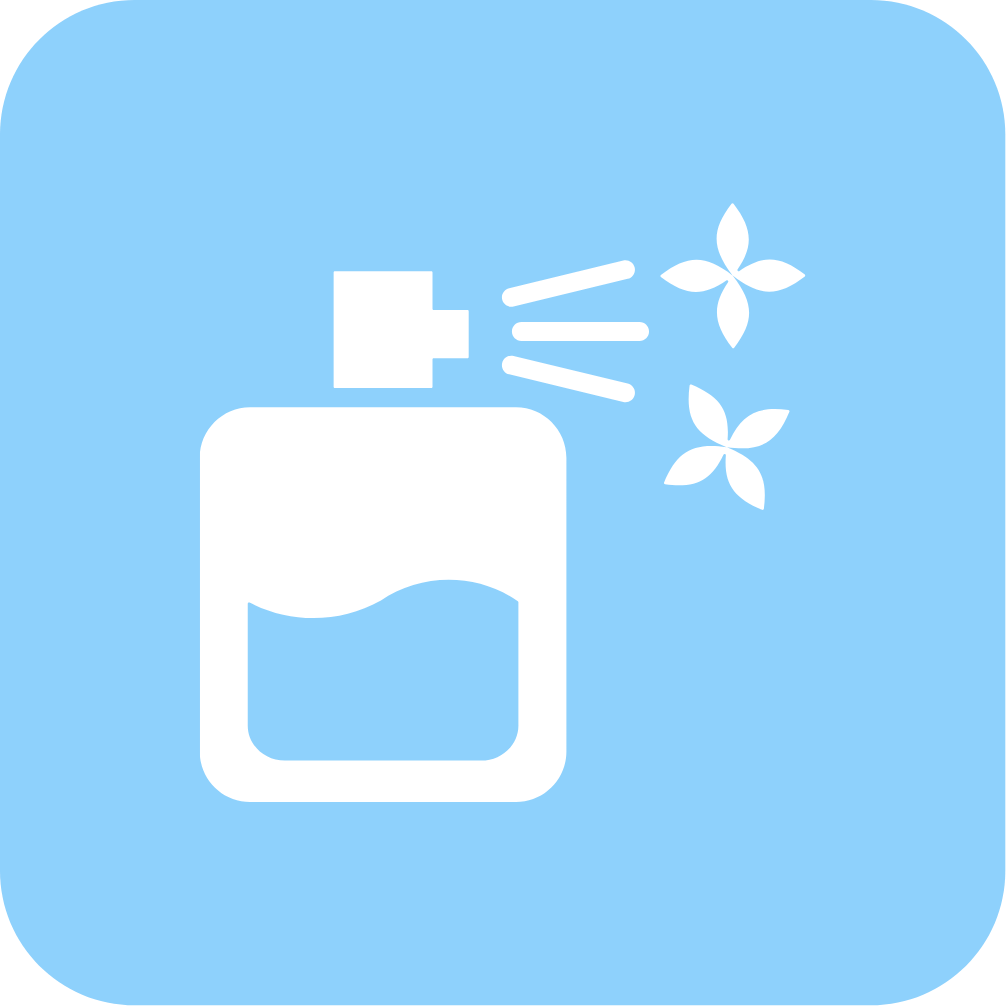
Manufacturers are now required to disclose specific fragrance allergens on product labels when present above certain thresholds. This change ensures that consumers, particularly those with sensitivities, can make informed decisions about the products they use. The list of required disclosures will continue to expand over the next several years, aligning Canada’s regulations more closely with international standards. Additionally, more precise ingredient concentration details may be requested during the notification process.
Labelling Requirements
Labels must now follow updated standards that emphasize clarity, consistency, and bilingual content. Key information such as product identity, function, safety warnings, directions for use, and known allergens must be presented in a clear and readable format in both English and French. Generic terms like “fragrance” or “parfum” are no longer sufficient if specific allergens are present, which improves label transparency and enhances consumer protection.
Cosmetic Notification Form (CNF) Updates

Recent updates to the Cosmetic Notification Form require manufacturers and importers to provide a valid Canadian address for the designated responsible party. This ensures Health Canada has a clear point of contact for all regulatory matters. Any changes to the formulation, product name, or responsible party details must also be reported promptly to maintain compliance.
Product Testing and Claims Substantiation
Cosmetic products that make specific claims, such as “hypoallergenic,” “dermatologist tested,” or “not tested on animals”, must now be supported by robust, verifiable testing data. These updates aim to reduce misleading claims and ensure that marketing language is backed by evidence. In parallel, testing standards have become more rigorous to confirm product safety before entering the Canadian market.
Why These Cosmetic Changes Matter

These regulatory updates enhance consumer trust, support public health, and create a more level playing field for responsible cosmetic brands. They also bring Canada’s regulatory expectations closer to those in other major markets, making it easier for companies to scale internationally. With stricter enforcement measures on the horizon, it is essential for brands to review their cosmetic products for compliance and ensure all labelling, documentation, and claims meet the new standards.
Final Remarks
Understanding and complying with Canadian cosmetic regulations is not just a matter of meeting legal obligations. It is a proactive investment in brand credibility, consumer trust, and long-term success. With clear regulatory expectations, strong alignment with global standards, and a commitment to safety and transparency, Canada offers a well-defined framework for companies aiming to build reputable cosmetic brands. By staying informed and compliant, manufacturers and importers can confidently bring innovative, safe, and appealing products to market, while also protecting their business and supporting informed consumer choice.
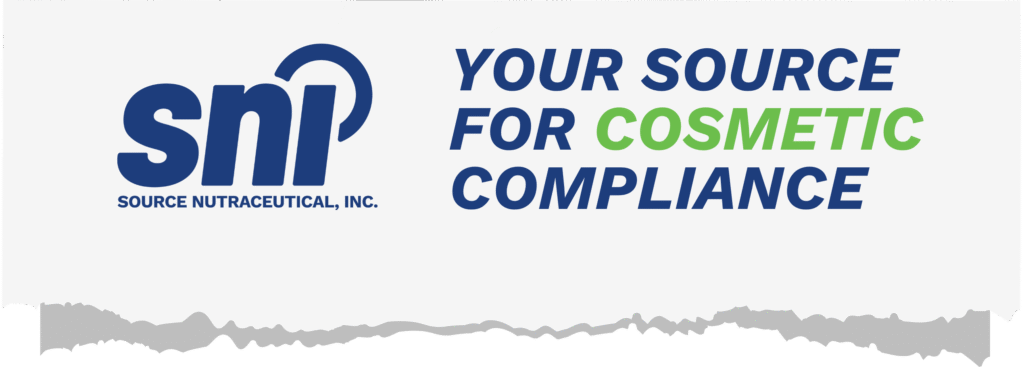
Whether you need support with formula reviews, label compliance, CNF preparation, or clinical study design, our team is here to help. With over 50 years of industry experience, SNI has supported both emerging and established brands in bringing their products to market in Canada and around the world. We take pride in our deep regulatory expertise and the tailored solutions we offer to help our partners streamline market entry and ensure long-term success.
💄 More about our services here.
💡 Compliance is easy with the right support!
📩 info@sourcenutra.com
⬇️ Send us a request for support or an introductory call
FAQs
What regulations apply to cosmetics in Canada and what must businesses understand?
Cosmetic products in Canada are regulated under three main legislative frameworks: the Food and Drugs Act, the Cosmetic Regulations, and the Consumer Packaging and Labelling Act. These regulations ensure that cosmetics are safe, accurately labelled, and not misleading to consumers. Companies must understand the requirements around product safety, labelling, and post-market oversight. All manufacturers and importers must submit a Cosmetic Notification Form to Health Canada within ten days of the product’s first sale in Canada.
Who must file a Cosmetic Notification Form and what information must be included?
The Cosmetic Notification Form must be submitted by the manufacturer, importer, or designated Canadian responsible party. This form must be filed within ten days of the product’s first sale in Canada. Required information includes the product’s name, form, intended use, type of application, ingredient list using INCI nomenclature with concentration ranges, and full contact information of the Canadian party responsible for the product. If there are changes to the product formulation, name, or responsible party, an updated form must be submitted.
What are the new fragrance allergen labelling requirements and when do they take effect?
Canada is introducing phased requirements for the disclosure of designated fragrance allergens on cosmetic labels. The first group of allergens must be disclosed if they are present above certain thresholds beginning in 2026. Additional allergens will be required to be declared in 2028 for existing products. These rules apply to both rinse-off and leave-on products, with different thresholds depending on the product type. The changes are intended to enhance consumer safety and provide greater transparency.
Can a cosmetic product labelled as “cruelty-free” be tested on animals?
No. Cosmetic products labelled as “cruelty-free” must not have been tested on animals at any stage of product development. As of late 2023, animal testing for cosmetics is prohibited in Canada. Products sold in Canada must comply with this requirement, and any claims related to cruelty-free status must be truthful and verifiable.
What types of claims are permitted on cosmetic labels in Canada?
Cosmetic claims must relate to the product’s appearance or sensory effects. Acceptable examples include statements such as “hydrates skin” or “adds shine to hair.” Claims that suggest a physiological or therapeutic effect, such as “heals dry skin” or “treats acne,” are not permitted for cosmetics. If such claims are made, the product will be reclassified as a drug or natural health product, which involves additional regulatory requirements including licensing, evidence submission, and pre-market approval.
✷ The content on this website, including information presented in this post, is provided for general informational purposes only and does not constitute legal, regulatory, or professional advice. While efforts are made to ensure accuracy, laws and regulations vary by jurisdiction and may change over time. Readers should not rely on this information as a substitute for advice from qualified legal or regulatory professionals. We disclaim any liability for actions taken based on this content, and users are encouraged to seek guidance specific to their circumstances.
